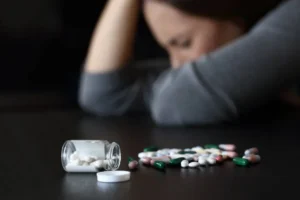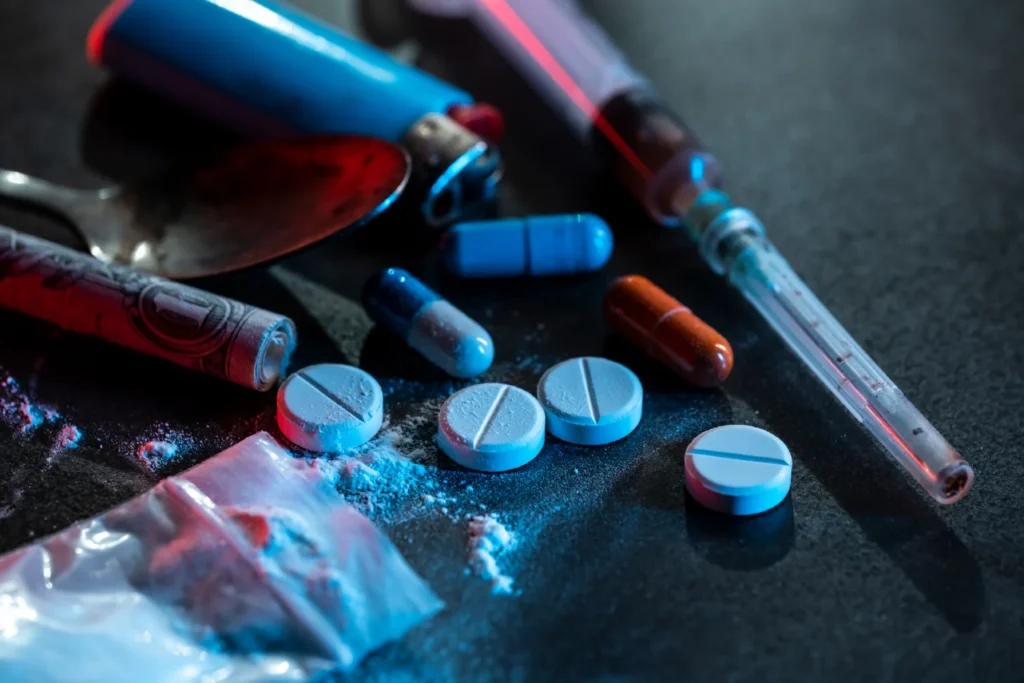Have you ever wondered if taking a pill to boost your alertness and keep you sharp all day is too good to be true? Modafinil, often hailed as a miracle drug for wakefulness and enhancing cognitive performance, has sparked debates on its safety and potential for addiction, especially with daily use.
In this blog, we’ll explore what Modafinil is, how it works, and the critical questions surrounding its safety and addiction potential.
Whether you’re a current user, considering it, or just curious about its effects, this guide will provide you with the insights you need. Let’s explore the reality behind Modafinil and ensure your health and well-being remain a top priority.
Contents
Understanding Modafinil: Uses and Mechanisms
 Modafinil is a prescription medication primarily used to treat sleep-related disorders such as narcolepsy, shift work sleep disorder, and excessive daytime sleepiness associated with obstructive sleep apnea. Beyond its medical applications, Modafinil is also widely recognized for its off-label use as a cognitive enhancer, often referred to as a “smart drug.”
Modafinil is a prescription medication primarily used to treat sleep-related disorders such as narcolepsy, shift work sleep disorder, and excessive daytime sleepiness associated with obstructive sleep apnea. Beyond its medical applications, Modafinil is also widely recognized for its off-label use as a cognitive enhancer, often referred to as a “smart drug.”
How Modafinil Works:
- Mechanism in the Brain: Modafinil’s exact mechanism is not fully understood, but it is known to increase the availability of neurotransmitters such as dopamine and norepinephrine in the brain, which are associated with wakefulness and alertness.
- Cognitive Enhancement: By enhancing neurotransmitter activity, Modafinil improves attention, concentration, and mental acuity, making it popular among individuals seeking to boost their cognitive performance, whether for academic, professional, or personal reasons.
Modafinil’s ability to promote wakefulness and increase cognitive function has made it a valuable tool for many; however, its mechanisms also suggest a potential for misuse or dependency, especially when used outside prescribed guidelines.
Is It Safe to Take Modafinil Every Day?
While Modafinil is approved for certain conditions that require daily use, such as narcolepsy, questions often arise about the safety of its prolonged daily use, particularly for non-prescribed purposes like cognitive enhancement. Here’s a breakdown of the primary safety concerns and guidelines associated with daily Modafinil use:
Medical Guidelines and Recommended Use:
- Prescription Guidelines: Modafinil is prescribed to be taken daily for individuals with narcolepsy or sleep apnea to promote wakefulness throughout the day.
- However, following the prescribed dosage is crucial. Deviating from it, especially increasing the dose without medical guidance, can lead to negative health effects and diminish its efficacy.
Potential Side Effects of Overuse
- Common Side Effects: These can include headache, nausea, nervousness, dizziness, and difficulty sleeping. These side effects are generally mild and manageable.
- Serious Side Effects: Though rare, more severe risks include severe rash, allergic reactions, psychiatric symptoms like depression or confusion, and heart issues such as increased heart rate and blood pressure.
In conclusion, while Modafinil can be safe for daily use when prescribed by a doctor and taken as directed, it is essential to be mindful of the potential risks and to monitor one’s health and response to the drug closely. Consulting with a healthcare professional before starting or making any changes to how Modafinil is used is always advised.
Recognizing Signs of Modafinil Dependency
Dependency on Modafinil can develop, particularly after prolonged or unsupervised use. Here are key symptoms and behaviors that may indicate a dependency on Modafinil:
- Increased dosage needs
- Persistent use despite negative consequences
- Experiencing withdrawal symptoms
- Spending a lot of time obtaining, using, or recovering from the effects of Modafinil.
- Repeatedly trying and failing to reduce or control Modafinil use.
- Neglect of activities
- Continued use in situations where it is physically hazardous to do so (e.g., operating machinery, driving).
If any of these signs are present, it may be an indication of developing dependency on Modafinil. Recognizing these early can help in seeking appropriate treatment to manage usage and avoid further complications.
Health Risks Associated with Chronic Use of Modafinil
 While Modafinil is effective for treating specific conditions, its chronic or excessive use can lead to several health risks. Here are the key health risks associated with prolonged Modafinil use:
While Modafinil is effective for treating specific conditions, its chronic or excessive use can lead to several health risks. Here are the key health risks associated with prolonged Modafinil use:
- Cardiovascular Issues
- Psychological effects, such as anxiety, depression, or hallucinations
- Sleep disturbances
- Withdrawal symptoms like fatigue, depression, and changes in mood.
- Difficulties in cognitive function, such as problems with concentration and confusion
- Risk of liver damage
Given these risks, it’s important for Modafinil users, especially those using it for non-prescribed purposes, to monitor their health closely and consult healthcare providers regularly. Adjustments to dosage or discontinuation might be necessary to mitigate potential long-term adverse effects.
Withdrawal from Modafinil: What to Expect
 Ceasing the use of Modafinil after prolonged periods can lead to withdrawal symptoms that vary in severity based on usage patterns and individual health.
Ceasing the use of Modafinil after prolonged periods can lead to withdrawal symptoms that vary in severity based on usage patterns and individual health.
Common withdrawal symptoms include:
- Fatigue
- Sleep Disturbances
- Depression
- Difficulty Concentrating
- Headaches
- Nausea
Managing Withdrawal Symptoms:
- Rather than stopping abruptly, gradually reducing the dosage of Modafinil can help minimize withdrawal symptoms.
- Engaging in a healthy lifestyle, such as maintaining a balanced diet, getting regular exercise, and ensuring sufficient sleep, can help manage withdrawal symptoms.
- In cases of severe withdrawal symptoms, seeking medical advice is crucial.
- Go for Counseling or therapy as it can be beneficial in managing mood swings and depression associated with withdrawal.
Typical Duration of Withdrawal:
- The duration of withdrawal symptoms can vary depending on the length of time Modafinil was used and the dosage. Typically, withdrawal symptoms begin within a few days of cessation and can last from a few days to several weeks.
Treatment Options for Modafinil Addiction

Dealing with addiction to Modafinil requires a comprehensive treatment plan that addresses both the physical and psychological aspects of dependency. Various treatment approaches can be effective, depending on the individual’s specific circumstances and needs. Here’s an overview of the primary treatment options:
Detoxification
- Supervised Detox: The first step in addressing Modafinil addiction is often a medically supervised detox program, especially if the user has been taking high doses. This process helps safely manage withdrawal symptoms and minimizes the risk of relapse during the initial withdrawal phase.
Therapy
- Cognitive Behavioral Therapy (CBT): One of the most effective forms of therapy for drug addiction, CBT helps individuals recognize and change negative thought patterns and behaviors that contribute to their addiction.
- Psychological Counseling: Regular sessions with a psychologist or counselor can help address the underlying issues that led to the addiction, such as stress management, emotional regulation, and coping mechanisms.
- Group Therapy: Participating in group therapy provides peer support and allows individuals to share experiences and solutions in a supportive environment.
Support Groups
- 12-Step Programs and Non-12-Step Programs: These groups offer a structured approach to recovery based on peer support, regular meetings, and sometimes a spiritual component.
- Online Support Forums: For those who prefer digital interaction or require more flexible support options, online communities can provide ongoing encouragement and guidance.
Professional Guidance
- Addiction Specialists: Consulting with health professionals who specialize in addiction treatment can provide tailored advice and treatment plans that significantly enhance the chances of recovery.
- Treatment Centers: Specialized treatment centers offer comprehensive programs that include detox, therapy, and support services, providing an integrated approach to overcoming addiction.
Combating Modafinil addiction often requires a combination of these treatment methods. Emphasizing professional guidance ensures that each step of the recovery process is handled safely and effectively, providing the best chance for a successful recovery.
Conclusion
Overcoming addiction to Modafinil, like any form of addiction, can be a challenging journey, but it’s one you don’t have to face alone. At QuitMantra, we understand the complexities of addiction and offer a supportive and comprehensive approach to treatment that addresses both the physical and psychological components.
Whether you’re struggling with Modafinil addiction or any other type of dependency, we’re here to help.
Don’t let addiction define your future. Book your trial therapy session or join our deaddiction program, and take the first step towards a healthier, addiction-free life. Recovery is possible, and it starts with the right help—reach out today.
